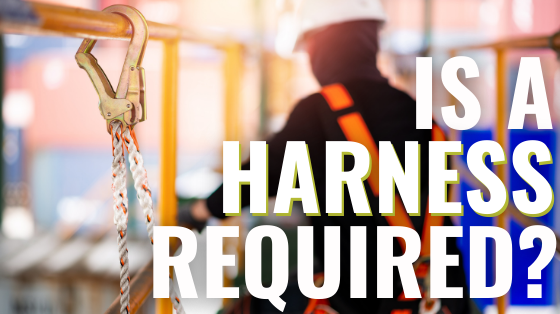
Is A Harness Required?
When are you required to use a harness? The short answer to this question is: it’s complicated. There are many variables that contribute to when a worker is required to wear a harness such as working heights, the type of equipment, job site conditions and company policies. However, a good starting point is to refer to the Occupational Safety and Health Administration’s requirements that state:
General Industry requires fall protection for any worker over 4’. 1910.28(b)(1)(i)
Construction requires fall protection for any worker over 6’. 1926.501(b)(1)
Instances where the general height rules do not apply include when job sites are in/around certain safety hazards like dangerous equipment, machinery or hazardous materials into which workers could fall. In these situations, fall protection or authorized guarding is required regardless of the working height.
James Lennartz, Training Manager at Hugg & Hall, recently spoke on the many considerations related to fall protection and when harnesses are and aren’t necessary.
“When it comes to the requirements of wearing fall protection it depends on both the equipment and/or the local/state/employer requirements,” said Lennartz. “According to the ANSI Standard (ANSI/SAIA A92.22); the guardrail system of the Mobile Elevated Work Platform (MEWP) is the primary fall protection for occupants.”
“When required to use personal fall protection, either fall restraint or fall arrest, operators and occupants shall comply with the instructions provided by the manufacture regarding anchorage(s),” said Lennartz. “Basically, if the person is using a scissor lift (Group A) they are not required to wear a safety harness as the guardrail system is adequate enough to provide fall protection. Now, local/state or employer can require an operator to wear a safety harness. If the MEWP is a boom lift (Group B), then here it is. All group B MEWP operators and occupants shall use personal fall arrest or fall restraint systems at all times.”
Specific rules may vary based on the companies and organizations involved as well as federal/state/local laws. Lennartz spoke on Hugg & Hall’s own policy regarding fall protection.
“Our drivers are required to wear a harness when loading and unloading booms only. We also require the same of customers and other drivers when on our yards,” said Lennartz.
Exceptions
There are a few exceptions to the basic rules and workers/managers always need to be trained on and understand the organizational rules and federal/state/local laws governing their job site. Safety should always be the first priority and fall protection is an important and essential part of work site safety.
Back to News
Subscribe and unlock cutting-edge equipment insights, trends and tips!
Subscribe